Signagraph Machine in Use at Treasury
The “Signagraph” was designed to be an office labor saving device as it allowed the user to sign five, ten or twenty checks at a time. The connected pen armature follows the motion of the hand of the user on one of the pens and signs multiple documents at the same time. Frank Thiel, Assistant Treasurer was featured in a newsletter using a Signagraph to sign a series of checks that moved along a conveyer platform. The article claims Thiel could sign 100 checks in 54 seconds and what used to take a full day of check signing could be done in half an hour. View our chronology of Treasury and the American Office Building
Typewriter and Stand in Andrew Johnson Suite
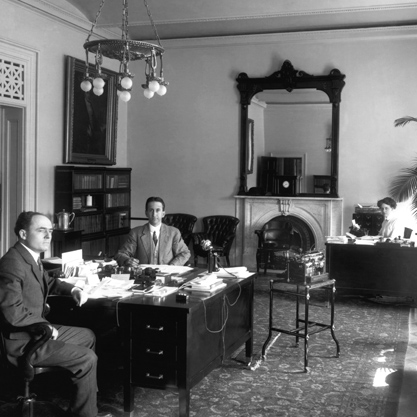
The predecessor of the desktop computer and the word processor was the typewriter. Typewriters and smaller desks or typewriter stands to hold them were necessary for business and professional correspondence and record keeping. The first modern American typewriter appeared in 1868 but took until almost 1880 to be successfully adopted by most businesses. The Treasury Collection has a number of vintage typewriters, yet, ironically, no desks or stands for typewriters at Treasury have survived.
Currency Production at Treasury

The Legal Tender Act of 1862 created a single nation-wide currency for the country with responsibility for managing and issuing the currency falling to the Treasury Department. While the legislation authorized the Treasury Secretary to engrave and print the notes within Treasury, in practice the notes were printed by private printing firms with only the final seals applied by Treasury. By 1869, the amount of production by the “Bureau of Engraving and Printing” increased to the point where they were partially printed at Treasury and in 1877 Congress mandated that all engraving and printing of notes, bonds and other securities of the United States be performed at the Treasury Department.
The First Treasury Building
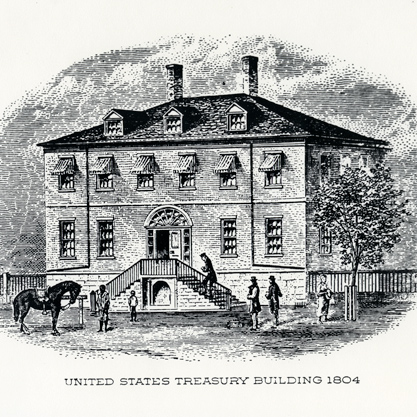
When the federal government moved to Washington, DC in 1800, the first Treasury building was ready to accommodate 69 Treasury employees. The center of the department at the time was the Customs Service and the collection of taxes on imports which provided the major source of income for the Treasury. By 1836, revenues from the Customs Service had risen to $20 million dollars annually and for the first time eliminated the national debt. Not yet involved in the production of coins and currency, the primary function of Treasury offices in the early 19th century was to process and safely store the financial receipts and paperwork of the department. After a number of fires including burning by the British during the War of 1812, the building would be replaced by the current Treasury building.
Treasury Clerks Working in Corridor

In 1910 it was recognized that the Treasury building was seriously overcrowded and the architecture firm of York & Sawyer was commissioned to develop a better space plan for the building's employees. Their report had concerns over many of the divisions that were seriously overcrowded and a lack of space for filing and storage. "The public corridors are used for clerical work, for money handling, cancelling and storage; files overflow into them."
Office of the Secretary of the Treasury, 1930
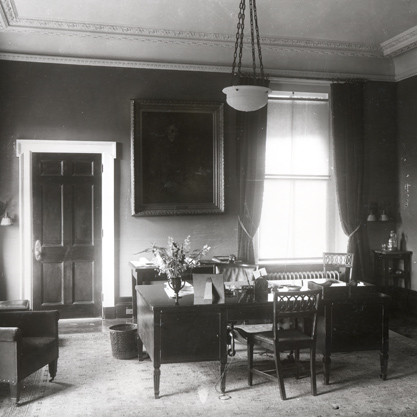
Many of the rooms in the Treasury building have been altered over years to accommodate a change in the functions in the building or the needs of the staff. Some of the executive offices; however, have remained true to their origins over a long period of time. Chief among them is the office of the Secretary of the Treasury which was frequently photographed, providing a superb visual history of changes in office furniture and equipment used by the Secretary.
Treasury Secretary's Office, 1992
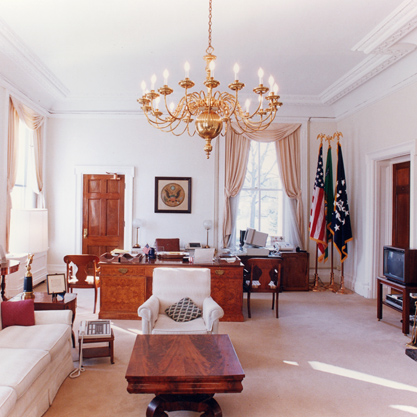
The office of the Treasury Secretary had been in the same location since the 1930's. Each Secretary makes changes to the space to suit their needs and preferences. This photograph from the time the office was used by Secretary Nicholas Brady shows that few architectural changes have been made to the space over the past 60 years While the desktop computer and the television appear dated to us now, they preview a dramatic shift to the increasing importance of technology and the media in the office.
Office of Treasury Secretary Sherman, 1879

An interior view of Office of the Secretary, with Secretary Sherman standing behind his partners' desk, with his assistant seated across from him. Sherman is speaking to two male visitors. The interior details include the desk, chairs, frame portraits, window coverings, wall and architectural details, spittoon and floor coverings. - Frank Leslie's Illustrated Newspaper, No. 1258, Volume XLIX, November 8, 1879.
Edward Rose Company Clothing Catalog, 1921
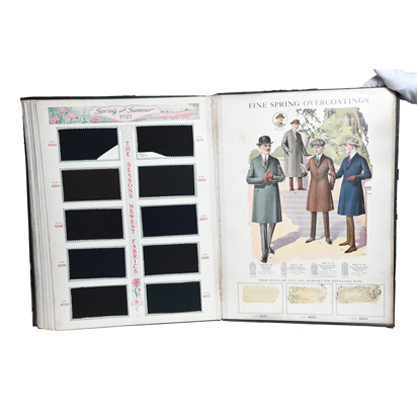
A made-to-order catalog from the Edward Rose Company of men's clothing for trades and professions. This catalog was found in the back of one of the vaults in the Treasury building. Along with the catalog was an order book with a list of receipts written out for Treasury employees who had placed orders. They included a suit ordered by a Mr. Harrington in 1919, an overcoat, coat, vest and pants for Mr. Sereno in 1920, and three other orders placed in late 1920 and early 1921. Although no prices were included on the receipts, in the early 1920’s a men’s suit was about $30.00, an overcoat $6.00, dress trousers $3.80-$4.75 pair, dress shirts $1.80-$4.00 each and a pair of dress shoes $4.85.
Ebulliometer Device
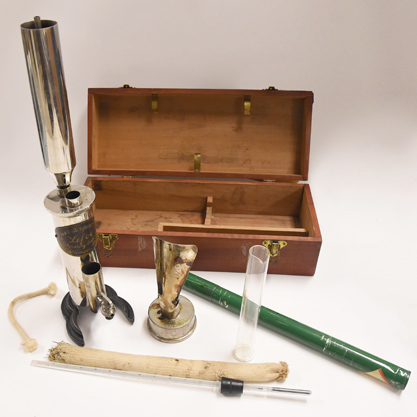
An Ebulliometer is used to determine the alcohol content of wine and spirits. This equipment was used in the Treasury building in a lab set-up on the 5th floor (now the West Gable Conference Room) as part of the testing of spirits for certification and tax purposes by the precursor of the ATF bureau. The apparatus comes in a wooden box with a metal pull on top and two metal closures which opens to reveal the instrument with parts, and a thermometer in green metal case.
Antique Hammond Typewriter
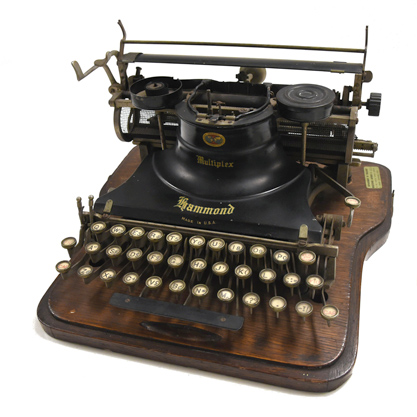
In 1913 the Hammond Company introduced the Hammond Multiplex Typewriter. A cylindrical wheel holds a curved plate with the letters. When you press a key, the wheel rotates to the correct letter and then strikes. The "Multiplex" design allows the use of two font plates in the machine at one time. A 1913 ad read: "Many Typewriters In One - Two sets of type always on the machine. A twist with the fingers and a change is made instantly from Roman to Italics, lending to your letters beauty as well as emphasis." The Hammond Multiplex desktop typewriter continued to be manufactured up until 1926.
Dictograph Phone
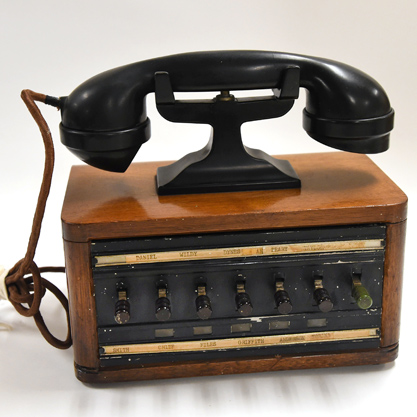
At a time when telephone calls were “connected” by switchboard operators, this special Dictograph could connect directly to a handful of other in-house Treasury phones, like our current peer-to-peer network. The Dictograph was frequently used in large organizations where a supplementary inter-communicating system was needed to provide a direct connection between a relatively small number of individuals, often officers and chief executives. The receiver and mouthpiece are similar in appearance to the hand telephone. This particular Dictograph, circa 1930, connected Fred Bauer, Chief of Subsection G of the IRS, to A.L. Duncan, Assistant Head of IRS Records, Inspectors and Mr. Grube.
